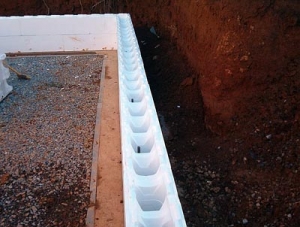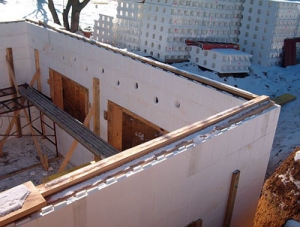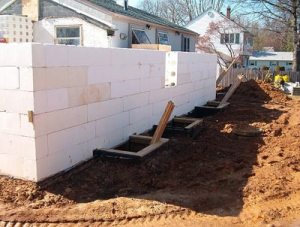 “Insulated Concrete Form” or “ICF construction” was designed to withstand the force of harsh weather, including the impact of hurricane winds. As professionals, we firmly believe in this durable method of building due to inherent all around benefits, such as exceptionally sturdy structures, ENERGY STAR qualifications… AND it is 100% environmentally friendly, thus a better alternative to wood!
“Insulated Concrete Form” or “ICF construction” was designed to withstand the force of harsh weather, including the impact of hurricane winds. As professionals, we firmly believe in this durable method of building due to inherent all around benefits, such as exceptionally sturdy structures, ENERGY STAR qualifications… AND it is 100% environmentally friendly, thus a better alternative to wood!
Rollman Building & Contracting owner, Lee Rollman has worked in the residential construction field for over 25 years. During this time he has used many methods of home construction, yet none, to date, deliver benefits to match ICF, which is why he chose it to build his family home. He feels secure knowing his family is protected from the same elements that devastate average homes and destroy lives.
We ask homeowners and contractors alike to take a closer look at ICF construction before choosing your next building material. Your decision could pay off if you find yourself up against the wrath of Mother Nature’s violent and forceful storms.
 MORE on ICF: “…Insulating Concrete Forms (ICFs) are stay-in-place formwork for energy-efficient, cast-in-place, reinforced concrete walls. The forms are interlocking modular units that are dry-stacked (without mortar) and filled with concrete. The forms lock together somewhat like Lego bricks and serve to create a form for the structural walls of a building. Concrete is pumped into the cavity to form the structural element of the walls. Usually reinforcing steel (rebar) is added before concrete placement to give the resulting walls flexural strength, similar to bridges and high-rise buildings made of concrete (see Reinforced concrete). The forms are filled with concrete every several feet in order to reduce the risk of blowouts. The foam on either side the forms can easily accommodate electrical and plumbing installations.
MORE on ICF: “…Insulating Concrete Forms (ICFs) are stay-in-place formwork for energy-efficient, cast-in-place, reinforced concrete walls. The forms are interlocking modular units that are dry-stacked (without mortar) and filled with concrete. The forms lock together somewhat like Lego bricks and serve to create a form for the structural walls of a building. Concrete is pumped into the cavity to form the structural element of the walls. Usually reinforcing steel (rebar) is added before concrete placement to give the resulting walls flexural strength, similar to bridges and high-rise buildings made of concrete (see Reinforced concrete). The forms are filled with concrete every several feet in order to reduce the risk of blowouts. The foam on either side the forms can easily accommodate electrical and plumbing installations.
After the concrete has cured, or firmed up, the forms are left in place permanently for the following reasons:
 Thermal and acoustic insulation
Thermal and acoustic insulation- Fire protection
- Space to run electrical conduit and plumbing
- Backing for gypsum boards on the interior
and stucco, brick, or other siding on the exterior.”
— Wikipedia.org
We would like to thank you for taking the time to read this important message. Please don’t hesitate to contact us if we can be of any assistance.